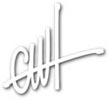
In the late 1970's I worked for a small restaurant design and décor manufacturer named Alfred Gordon Designs in Costa Mesa, California. Our specialty was mid level full service restaurants, a step above Denny's but maybe not always a Tavern on the Green. We worked for a design fee and then bid on manufacturing and providing all of the interior décor products. Occasionally we also produced designs for some high budget McDonald's or special projects for other quick service chains. Sometime around 1978 or 1979, we were commissioned to design some of the first McDonald's Restaurants to be built on US military bases over seas, the first to be built on Kadena Air Force base in Okinawa, Japan.
One of the requirements was the development of signage for an international clientele so the use of symbols for everything from restrooms and kitchen doors to the flap on the trash bins needed to be understandable in any language.
"Restroom" and "do not enter" signs were pretty standard then but nowhere could we find an appropriate symbol to replace the more common "Push" or "Thank You" lettering that was in popular use at the time.
Several brainstorming sessions produced images of metal trash cans, crumpled paper, rubbish heaps and other unmentionable ideas that inevitably occur in meetings of this type. Eventually we settled on a pointing hand and crumpled paper and I was set with the task of creating something that could be produced with a pin router on the face of a laminated panel.
After several failed tries at locating a suitable hand image (this was well before Google or Yahoo) I simply sat down with pencil and pad and began sketching ideas of my own. I have a distinct memory of sitting at my desk, holding out one hand in various poses while I sketched it with the other. After some modification that saw the crumpled trash evolve into the simpler cup, the image above emerged.
Once approved by the client, the full scale artwork was mailed to the contracted furniture manufacturer for production and the project was shipped to Okinawa. Little did I know that the furniture contractor, Jay Buchbinder Industries, (and also my future employer) now in possession of the tooling for this symbol would begin using it on nearly every trash container it shipped from then on.
Once JBI trash units started appearing in the domestic market with the "Hand Graphic", other quick service seating and décor manufacturers began to copy it for temselves. Today, the Hand Graphic is one of the most recognized symbols in the world and all I can say is "If I only had a dollar for every one…"
C. Michael Hager
